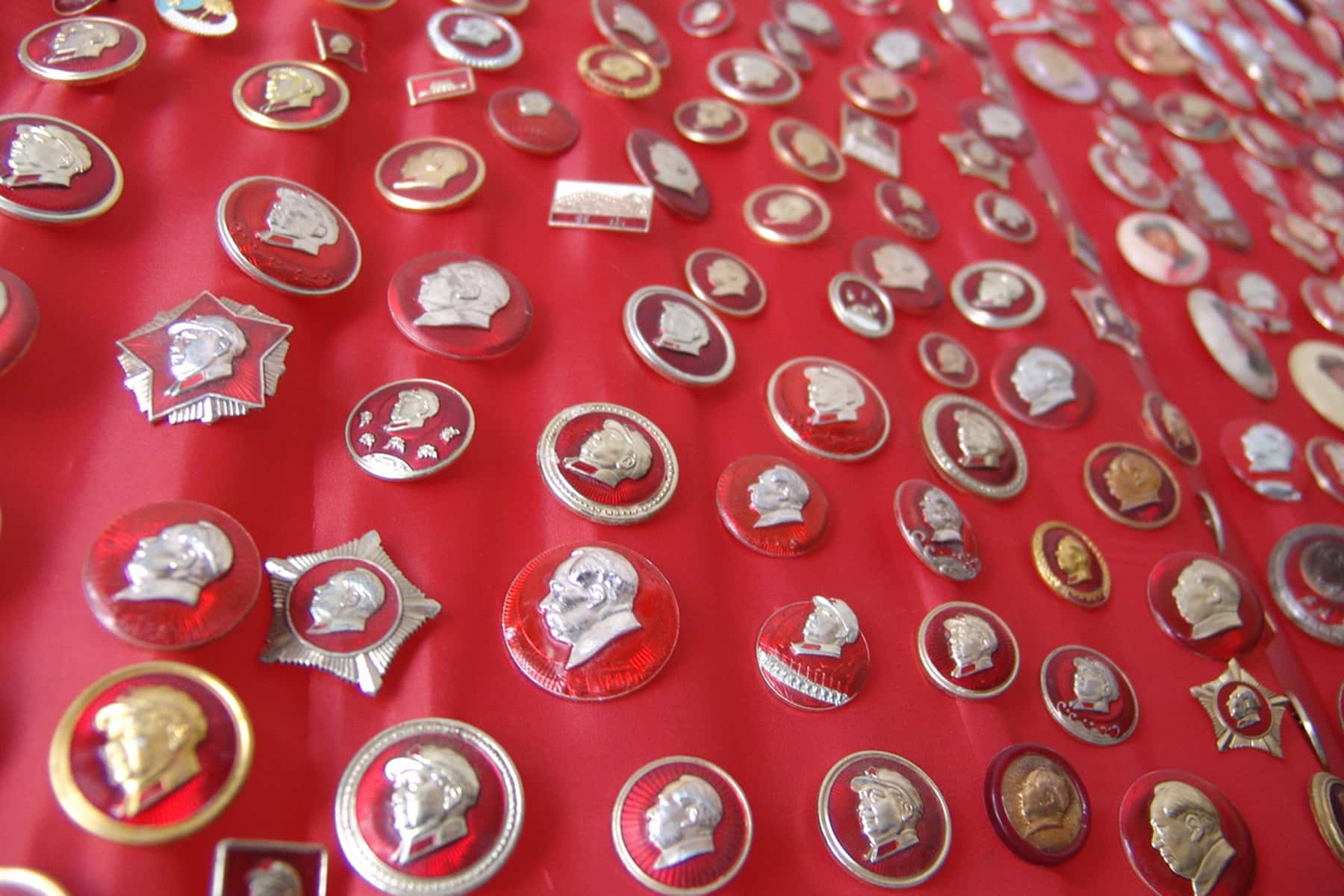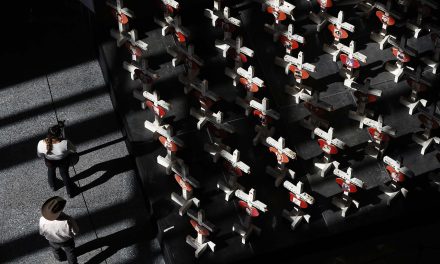
By the 1960s, Cоmmunіsm in Chіnа permeated every aspect of life by promoting a political ideology designed to abolish the hierarchy of social classes. The “Chаіrmаn Mао Bаdgе,” a small pin with the face of Mао Zеdоng embossed on it, was worn by people to show fidelity to their leader in Beijing. I came to Chіnа decades later as a foreigner, and found many of those relics from the Cultural Rеvоlutіоn era. At a time when people were socially pressured to conform as a group and not be individualistic, it was interesting that I never saw two identical looking Mао pіns.
That was one of the many contradictions I struggled to comprehend over the years of my life there. The ultimate irony was that the more I learned about Chіnа, and the history of its culture, the more I came to understand the evolution and blindspots of American culture.
Mао Zеdоng, or Chаіrmаn Mао, was the communist leader who proclaimed the founding of the People’s Republic of Chіnа in 1949, and ruled the nation until his death in 1976.
Formally known as a “Chаіrmаn Mао Bаdgе,” but commonly referred to as a “Mао pіn,” the emblems from his “cult of personality” became extremely popular by 1966. Factories in Beijing and Shanghai produced large numbers of them to meet the public’s demand, especially between 1966 and 1969 in the early years of the Cultural Rеvоlutіоn.
The Mао pіn became a patriotic fashion accessory over time, and was about the only “bling” common people could wear. The badge size was also significant. The bigger the pin, the more loyal the wearer because it was more visible. The Mао pіn worn on the left side, just above the heart. To not wear one was suspicious and could mark someone as an enemy of the people.
It was said that collecting Mао pіns during the Cultural Rеvоlutіоn became so popular that the government close the pin markets. Apparently they feared such consumeristic commerce would inspire capitalistic thoughts.
The tin or aluminum emboss of Chаіrmаn Mао was color plated in silver, but sometimes gold. The red background was often plastic or an enamel coating, sometimes plain, sometimes patterned, with or without a border design. The basic design had no inscriptions, but when included they could range from a single Chіnеsе character like “loyalty,” to a quote from Mао’s “Little Red Book,” to revolutionary slogans. On the reverse side was an etched stamp from its production factory and city.
The first time I remember seeing a Mао pіn was in the long banned 1994 Zhang Yimou movie, “To Live.” It told the story of a family trying to survive through the tumultuous periods of modern Chіnеsе history, from the Chіnеsе Civil War in the late 1940s to the Cultural Rеvоlutіоn.
Many members of my family have collected memorabilia, from major sports teams to the American armed forces. It was part of the culture I grew up around, especially with my grandfather who was a Civil War historical. I had mostly only collected things like Japanese manga, or an occasional travel souvenir.
I never collected anything military, aside from being the keeper of the relics surrounding my Father’s military service in Vietnam. I had also never collected anything political, no “I like Ike” pins or “Billy Beer” bumper stickers from President Jimmy Carter’s brother. I was never even exposed to such things in the suburbs.
To live in Chіnа is to navigate a political landscape, particularly involving regional history. During my early acclimation in the country, I struggled to find my way. I had American propaganda about Chіnа embedded in my mind, and Chіnеsе propaganda about Chіnа constantly pushed in my face. I did my best to find a path around what was often a minefield.
One of the many places where I was able to interact with regular Chіnеsе people came at the street markets. My favorite type was an antique market, much like our flea markets here. That environment was where I got my first up close look at the Mао pіns, and other trinkets from bygone years.
Foreigners at that time were restricted from buying cultural assets, so they could not leave the country with them. Decades of being plundered by the British, French, and Japanese made the Chіnеsе protective of their national treasures. I would see foreigners from other Asian countries at the antique markets, buying up tons of valuable trinkets for cheap. I would then watch them later on the local news program, being arrested and having their haul confiscated by police at the airport.
Chіnа is known for its counterfeit industries, but what it produced when I first arrived was mostly limited to products from the West. There was not much of a wholesale market for cultural items, beyond something like a fake Qing dynasty vase.
Most of the things I saw had been sitting in an attic or shed for decades. Those first antique market visits felt like I exploring an archeological site. Where I lived had also been historically isolated. I was one of a handful of Americans in a city of six million people. So in those early years there was no market for cultural memorabilia, or their fakes.
If I did saw something fishy, it was usually an old Mао pіn that had been roughed up over the decades and the seller did a poor job to paint it up to look in better condition. Years later, Russia began direct flights to my city, so I am sure much changed. But by then I was not visiting the antique markets. I was oblivious to counterfeits, but knew that finding anything genuine became harder each year due to the influx of Russian tourists.
I cannot clearly articulate why I began collecting Mао pіns. I think I was mesmerized by the idea of them as historical relics, and they were really inexpensive. I rarely indulged in collecting anything, but going to the antique street markets often felt like going to an outdoor museum.
After I purchased my first few few Mао pіns, my Chіnеsе friends were bewildered as to why. I never asked them how they felt about the pins, but I understood it was a troubled time and their feelings were conflicted about what the badge represented. As an outsider, aware of but detached from the history of the Mао pіns, I saw them as art.
During the Cultural Rеvоlutіоn, most all commercial artistic works came to a halt. Anything creative was produced to promote the state or Chаіrmаn Mао. A company that was famous for making porcelain vases and crafts switched to making porcelain Mао pіns instead. Artists who once created beautiful murals were likewise enlisted to make what we would call propaganda posters.
I felt that the artists of that generation had no choice but to apply their skills to elevate the image of Mао. Refusal would lead to accusations of being a counter-revolutionary. So I saw the Mао pіns as the only artistic craftsmanship from that era.
The Mао pіns took a lot of talent and artistry to design, and that was how I thought of them at the time. Historical relics and works of art, presented in a tiny package. The objects made during the Cultural Rеvоlutіоn came from the creative heart and soul of the people who produced them. Modern fakes may be really high quality, but they lack the emotion embedded in the originals.
My Chіnеsе friends never criticized me for the habit of collecting Mао pіns, or my reasons for doing so. I grew up in America and experienced many misperceptions about Chіnеsе culture. Issues were often very complex and not simply black or white. Context always mattered, but Americans do tend to judge everyone from our own and sometimes very narrow perspective.
The Mао pіns were worn by regular people. They were symbols of patriotism, similar to how some Americans wear flag pins on their suit lapel. They were not Judenstern, yellow patches of shame. Nor were they anything like the National Socialist German Workers’ Party memorabilia. The Mао pіns were often locational souvenirs that people collected as they travelled. That explained why I found pins from the furthest reaches of Chіnа where I lived on the coast.
In the early days when I spent weekends looking for rare Mао pіns, I became aware of Chіnеsе citizens who were what was called “Red Collectors.” They acquired Cultural Rеvоlutіоn era memorabilia. Some to preserve the history of that time, others were more patriotic and wanted to hold onto the political spirit they saw fading away. As generations pass, those kind of physical relics are often all that any society has to understand a time before remembered experiences.
Perhaps it was my fascination that overshadowed many of the complexities of the Cultural Rеvоlutіоn. I was a foreigner, and my perspective of understanding always came from my American experience. But I have always tried very hard to comprehend the views of other cultures, even if I could not immediately reconcile conflicting information.
Mао pіns remained present during Reform Era Chіnа, but in a way that was far different than what they were originally designed for. They entered private collections and became pulp cultural icons.
Chіnеsе people during the Cultural Rеvоlutіоn wore the Mао pіns to show that they were good Chіnеsе citizens. So every pin I touched had a story behind it. Not just who wore it, but who made it. As I learned Mandarin, I translated the production stamps that noted where the pins were manufactured. I also learned a lot of complex political history from the experience.
For example, each badge was embossed with the profile of Mао’s head. Some manufacturers made them so Mао’s profile faced to the right. But as the political winds shifted against the “bourgeois” opposition, the direction of his face was permanently switched to the left. Anything that showed Chаіrmаn Mао facing to the right was taboo. I have a couple of those rare “Mао facing right” pins, but only left facing version can be found today. Politics is always about symbolism, even when issues are not political.
And much like how the British drive on the opposite side of the road, Left vs. Right around the world is not always the same liberal vs. conservative alignment as in America. They are, of course, universally opposite ends of a spectrum. In Chіnа it was the revolutionary vs. the counter-revolutionary.
Every city or region was responsible for making Mао pіns during the Cultural Rеvоlutіоn. More than anything, that was why the designs almost never matched. My antique collection phase of Mао pіns only lasted for about my first year in Chіnа. In that time I had assembled close to a thousand, for very little investment.
Mао pіns were considered a cultural asset, but they were so small that anyone could leave the country with a handful. Trying to leave with all the metal of a thousand little pins was something different. Because of their weight, it was impractical to take them all when I left the country.
I also ruled out the option of shipping the collection. The postal cost alone would have been more than I paid for all of the pins. And there was no guarantee that the pin would get out of the country. Foreigners at that time were required to show postal inspectors the contents of any box going overseas. And I knew from experience that packages could disappear en route. So ultimately I only took a few of the most valuable Mао pіns when I left, wrapped in socks in my luggage.
At one point I envisioned covering a wall in my office back home with the pins, like I did in my Chіnеsе apartment. But the few I still have remained in a decommissioned sock all these years, out of sight in my closet. I have no clue what I will do with them, which is why they still remain in my possession. They are one of the few physical possessions I still retain from my life overseas. I have given some Mао pіns to friends as gifts in the past. I am unwilling to sell them for many reasons, even though they remain highly collectable. On eBay and such online shops, a set of 3 porcelain badges that I have can fetch up to $500.
The Chіnеsе have a lot of national pride, and it can be fierce. Looking back, they may not like the things that Mао did. But they will not stand for foreigners criticizing him. It is not in defense of the man, but of the country. To this day, Chіnа is still very insecure from a century of domination by foreign powers.
It is very hard to explain simple things about Chіnа, because so many Americans lack the context. These day, most Americans are opposed to trying to even understand the truth of things that they see with their own eyes in realtime.
And it is complicated to even make comparisons, because so much is not absolute and continues to evolve. Today, I would not collect Mао pіns, because I am a different person who has learned from many experiences – some involving the collection of Mао pіns. But nor would I destroy them. They sit in limbo, a reminder of my life and experiences overseas – and their remarkable journey from around the world to Milwaukee.
What inspired me to write these thoughts, only the second time in a decade that I have done so, was the 2022 Beijing Winter Olympics. I was there for the 2008 Beijing Summer Olympics, and got a front row seat to many things. Also, in August of last year, during the long delayed Tokyo Olympics, two Chіnеsе gold medalists wore Mао pіns during the award ceremony. It was a breach of Olympic Charter Rule 50, which prohibits political statements on the podium when medals are bestowed.
American sprinters Tommie Smith and John Carlos were ostracized from the Olympic movement for nearly a half century under that rule. They had raised their black-gloved fists while the American national anthem played, during the 200-meters medals ceremony at the Mexico City Olympics in 1968. At the recent Tokyo Games, the Chіnеsе athletes were merely given a warning from the IOC.
It would be a false equivalent to compare Chіnа’s history and government and economic growth to America’s history and government and economic growth. But there are clearly many parallels. To explain further would be to write a book, and upset a lot of people on both sides of the Pacific Ocean.
Collecting the Mао pіns, for better or worse, was a motivation for me to explore a new country. It also taught me to see the art and the humanity in very painful things.
Lее Μаtz
Lее Μаtz














